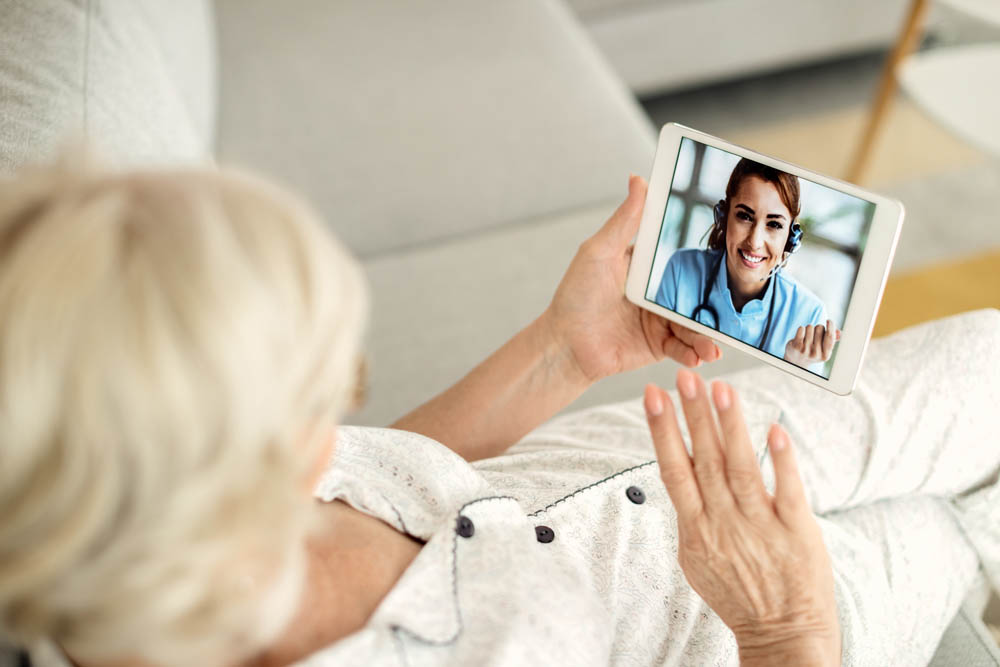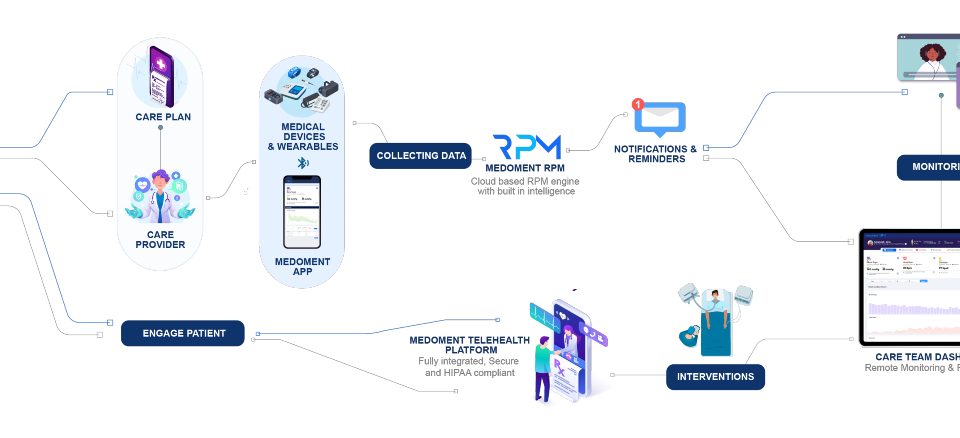
Medoment Partners with Mediflex to Revolutionise Healthcare in the Maldives
April 24, 2022
What is the ideal telemedicine software for Saudi Arabia?
June 2, 2022The use of digital and telecommunication media for medical consultations and other health applications is increasing. However, the uptake varies between different population groups.
An analysis of telehealth use in the USA (2020-21) found that women made up almost 60% of telehealth patients. It also reported an increased use of telehealth services among young women, in comparison to other groups. One survey found that adults under 40 years were more likely to prefer videoconsulations than those who are older.Women use telehealth more than men
Several American telehealth providers reported that women used telehealth at significantly higher rates than men in 2021. One provider found that women aged 25 to 44 were the most frequent telehealth users overall, while women aged 45 to 64 used telehealth most frequently for managing chronic conditions. Another study found that for adults older than 30 years old, telehealth use was significantly higher for women, but for younger patients the difference between men and women was not significant.
Women tend to be higher utilisers of healthcare services in general and make up to 80% of healthcare buying and usage decisions for themselves or other family members. Women are also more likely than men to use mobile health applications or search for health information online.

Why do many women prefer telehealth?
Telehealth enables access to medical care at a convenient time and location. This can be especially helpful for those with caregiving roles and busy schedules. Many women have competing demands on their time, shouldering a greater share of childcare and unpaid domestic work, often in addition to paid employment. Difficulties obtaining childcare or transportation to visit a clinic or hospital are no longer an issue when accessing healthcare from home.
The availability of text-based, asynchronous, telehealth solutions may help women quickly access information and advice, reducing the need to wait for an appointment and may also help overcome broadband connectivity issues.
Telehealth can provide greater confidentiality when accessing information and care for sensitive health issues such as mental health, or sexual and reproductive health.

Examples of telehealth use
During the COVID-19 pandemic, behavioural health was the telehealth service most used by women. The majority of existing telehealth interventions designed specifically for women are currently related to maternal health, prevention, and disease management.
Telehealth is increasingly used in nearly every aspect of obstetrics and gynaecology, including virtual consultations and remote monitoring and follow-up during and after pregnancy. Studies have shown that telehealth interventions were associated with improvements in obstetric outcomes, perinatal smoking cessation, and breastfeeding.
Provision and insurance coverage for telemedicine was scaled up during the COVID-19 pandemic. It is important that these provisions remain even after the current pandemic, to keep virtual healthcare options open for those who find it difficult to make in-clinic appointments.

Digital innovations for women’s health
In recent years, many ‘femtech’ start-ups have emerged to address the growing demand for innovations to improve women’s healthcare. These include mobile applications for fertility, menstruation and pregnancy tracking. However, not all are based on scientific evidence or medical expertise.
What does the future hold?
Women’s healthcare needs extend far beyond the areas of fertility and pregnancy which have been the main focus of ‘femtech’ startups. There is great potential for biotech innovations to prevent and improve the management of conditions such as cancer and heart disease which may present differently in women, who have been historically underrepresented in clinical trials.
Analysis of the healthcare sector predicts that the use of telehealth will continue to increase. Healthcare seekers, especially women, will increasingly choose providers who offer virtual care options.

Are you looking for the ideal patient engagement solution for your healthcare practice?
Medoment is a patient engagement portal that securely and seamlessly integrates all aspects of the care pathway, including telemedicine, compliant with the highest standards for data protection.
RECENT POSTS
- 7 Benefits of Medoment RPM for Your Practice
- Remote Patient Monitoring for Chronic Disease Management
- Can telemedicine help reduce the impact of cardiovascular diseases?
- Can telemedicine be used during pregnancy?
- Can Telemedicine Improve Diabetes Management?
- How to conduct a physical exam via telemedicine
- How can MEDOMENT Optimise Patient Engagement?
- Can patient engagement portals improve healthcare?
- How to choose the right telemedicine software partner
- How to invest in telemedicine software

